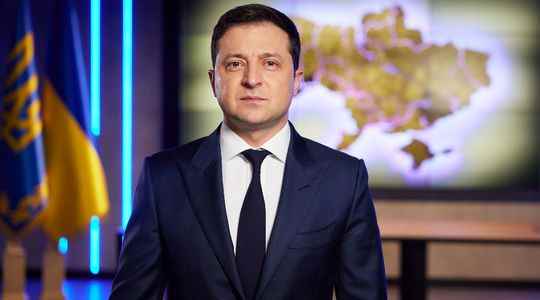In a few days, the scene became a ritual: the Ukrainian president, Volodymyr Zelensky, all dressed in khaki, taking the floor for a short speech on Instagram next to the Ukrainian flag. The voice is rocky, the tone calm, the air martial. And the clear message: it is an army chief who addresses a population that has entered the war despite itself. With his 13 million subscribers on the social network, Zelensky knew how to use his outstanding communication skills to embody the Ukrainian resistance against the Russian invader.. Rising to the height of the event, the former comic despised by Vladimir Putin acquired the stature of a true warlord.
The man who came to power in April 2019 was not elected for that, but to breathe new life into a Ukrainian society undermined by corruption scandals and tired of the war, which was then raging in the east of the country. . Originally, Zelensky managed to capitalize on the popularity gained by playing the title role of his series servant of the peoplewhich he will resume to baptize his own party.
“Many have confused him with his character as a naive but honest history teacher who became president by accident,” notes Galia Ackerman, a specialist in Ukraine. Winner of outgoing Petro Poroshenko with more than 73% of the vote, the president first advocates dialogue with the Kremlin and invites Putin several times to be negotiated face to face. Exchanges of prisoners with the separatists of Donbass and Russia are organized. In December 2019, he spoke for nearly eight hours with Putin in Paris.
Eye to eye
But these discussions “eye to eye” lead him to an impasse. Zelensky then decides to opt for a more offensive attitude towards Moscow. “At the beginning of 2021, his policy changes,” observes Ukrainian political scientist Mikhail Minakov. It bans three pro-Russian media and attacks the oligarch Viktor Medvetchouk, one of the leaders of the formation defending pro-Russian positions in Parliament. He finally organizes an international forum in Kiev for the “liberation” of Crimea annexed since 2014.
But it is on the occasion of the recent resurgence of tensions with the Kremlin that Zelensky takes on its full dimension, at 44 years old. His calm impresses in the face of Putin’s threatening posture and increasingly alarmist reports from Americans. In mid-February, he went to the Munich security conference, when fears of an invasion of Ukraine by Russia were at their maximum. Westerners recommend him not to leave the country. “But he took the risk, and did exactly the right thing, says François Heisbourg, special adviser at the International Institute for Strategic Studies in London. By going to Munich, he projected an image of quiet strength and continuity. of State.”
“The Fight Is Here”
When war broke out a few days later, Zelensky refused the Americans’ offer to evacuate him. “The fight is here. I need ammunition, not a driver,” he retorted. In this very constructed communication strategy, his consistency pays off. “He has set a line and he will stick to it”, according to François Heisbourg.
To show that he is in his position and that he is not afraid, the Ukrainian president showers his subscribers with tweets and videos shot in Kiev with his mobile phone, whether or not surrounded by members of his government. “He reuses the same springs as during his presidential campaign, where the small videos he published on social networks had been decisive in his campaign at a minimum”, decrypts Galia Ackerman.
The former comedian also cast himself in the role of the chief diplomat, capable of putting pressure on European leaders. With efficiency: Sunday, February 27, the European Union announced that it was going to finance the delivery of arms to Ukraine. A first. The next day, Zelensky asked for his country’s “immediate” integration into the organization. “He is a warlord, of course, recognizes Mikhail Minakov. But he has above all become the symbol of a European Ukraine”. And that, Moscow did not expect.
